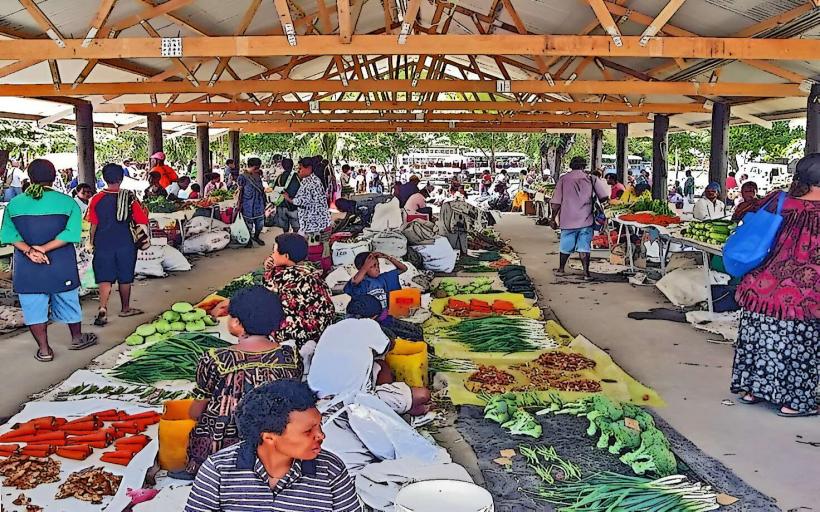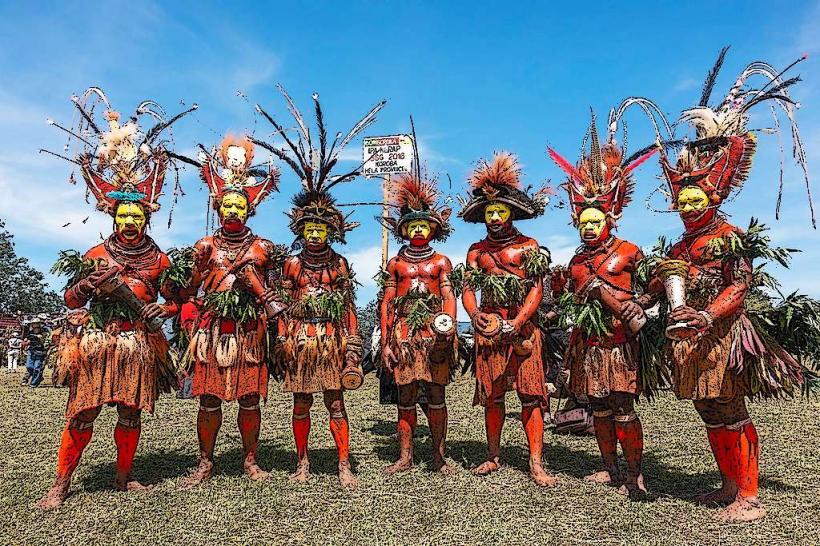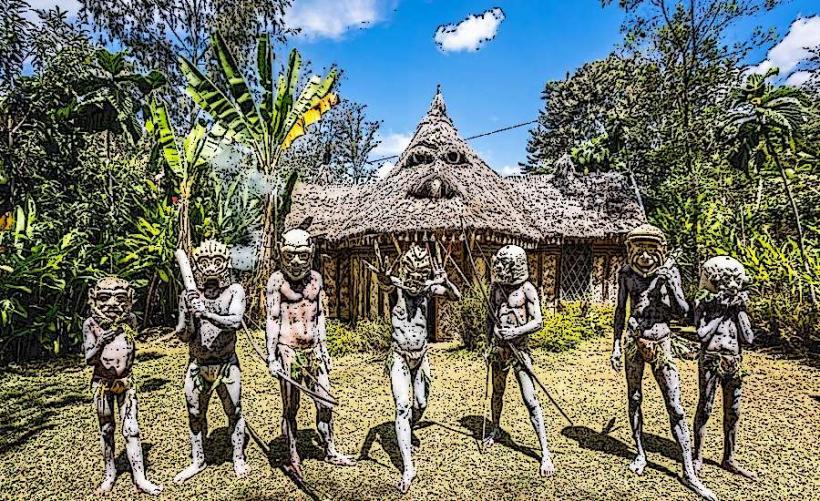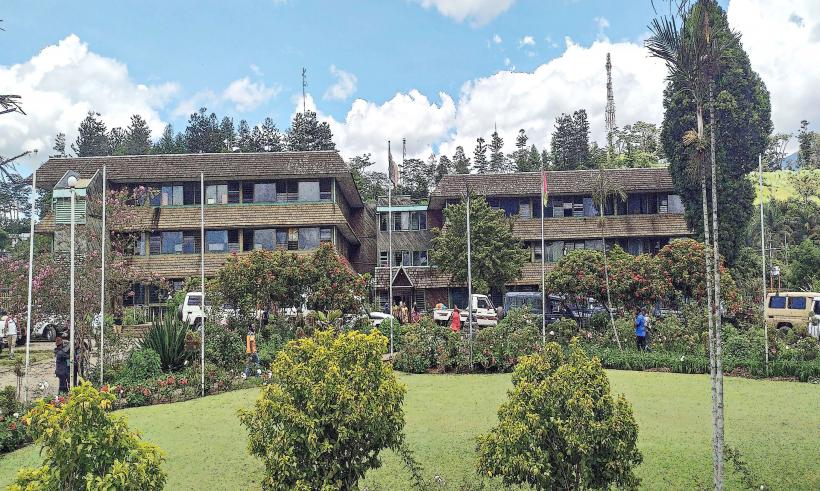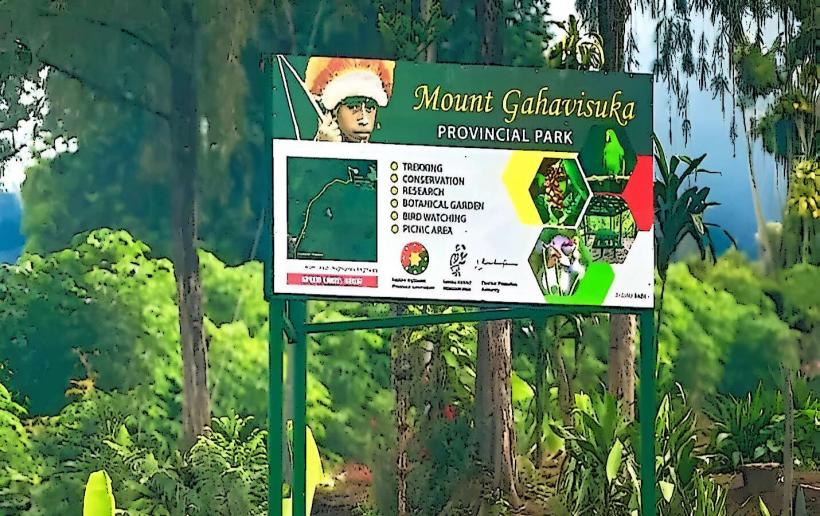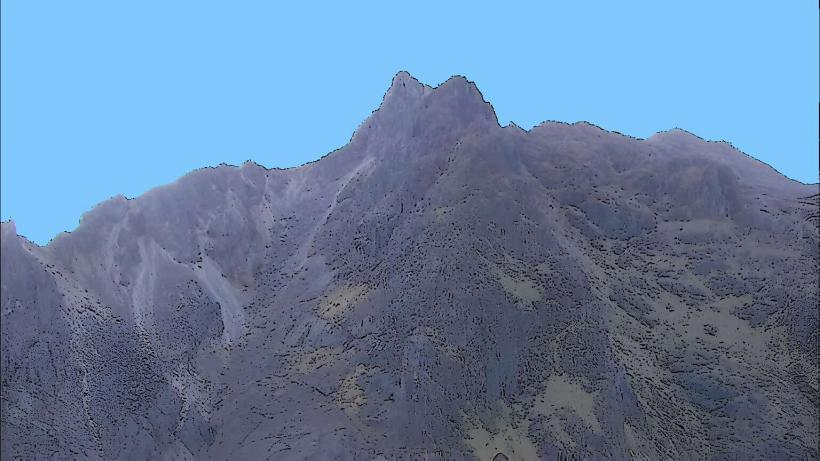Information
Landmark: Tawi RiverCity: Goroka
Country: Papua New Guinea
Continent: Australia
The Tawi River is a significant river located in the Eastern Highlands Province of Papua New Guinea. It flows through the mountainous terrain of the region, providing important resources for local communities and contributing to the area's natural beauty. While the river is not as widely known as some of the larger rivers in Papua New Guinea, it still plays an essential role in the ecology, economy, and culture of the area.
Key Features of the Tawi River:
Geographical Location:
- The Tawi River is located in the Eastern Highlands Province, which is part of the Highlands Region of Papua New Guinea. This region is characterized by its rugged mountains, deep valleys, and lush rainforests.
- The river flows through a variety of landscapes, including steep hills, fertile valleys, and agricultural land, providing water resources for both human and ecological needs. It is one of many rivers that make up the extensive river system in the Highlands.
Source and Course:
- The Tawi River originates from the mountains and highland plateaus of the region, where it is fed by rainfall and natural springs. As it descends through the valleys, the river meanders through the highlands, eventually flowing toward other water systems that drain into the larger river networks in Papua New Guinea.
- The river serves as an important water source for the local villages and the surrounding communities. Its course supports the region's agriculture, as the river's waters help irrigate fields and provide water for crops.
Ecological Importance:
- The Tawi River is an important ecological feature of the Eastern Highlands, sustaining the biodiversity of the area. The surrounding landscape includes a mix of rainforest, forest reserves, and wetlands that thrive due to the presence of the river.
- The river’s ecosystem supports a variety of plants, fish species, and other wildlife, which in turn contributes to the livelihoods of local people who rely on the river for fishing and agriculture.
- The surrounding forest and riverbanks provide important habitats for endemic species and contribute to the environmental health of the region.
Cultural Significance:
- Rivers in Papua New Guinea, including the Tawi River, often hold cultural significance for local tribes and indigenous communities. In many rural areas, rivers are central to daily life, serving as sources of water, transportation routes, and fishing grounds.
- The river is important for the local economy, as it supports subsistence farming and agriculture. Communities living along the Tawi River often use its waters for irrigation, which is crucial for crops such as sweet potatoes, vegetables, and cash crops like coffee and cocoa.
Agricultural Role:
- The fertile soils along the banks of the Tawi River make it an important area for agriculture. Farmers use the river's waters for irrigating crops and supporting livestock. The area is part of the larger highland agricultural system, which has sustained the people of the region for centuries.
- Agriculture in the area is typically subsistence farming, where local people grow food for their families, but there is also a significant amount of commercial farming, especially in crops like coffee and vegetables, which are sold in local markets and sometimes exported.
Challenges and Environmental Concerns:
- Like many rivers in the Highlands, the Tawi River faces environmental challenges, including deforestation, pollution, and the impacts of climate change. Deforestation and agricultural expansion along the riverbanks can lead to soil erosion and sedimentation, which in turn affect the water quality and the river's ability to support local ecosystems.
- Climate change is also a concern, as changing weather patterns can affect the river's flow, leading to either flooding or drought conditions. These changes can significantly impact the local communities and their agricultural productivity.
Recreational and Scenic Value:
- Although not as widely known as other rivers in Papua New Guinea, the Tawi River offers stunning scenic views and is an area of natural beauty. Its path through the mountainous landscape provides visitors with opportunities for hiking, photography, and nature tours.
- The surrounding area is also a prime spot for exploring local culture and traditional villages, as many of the indigenous communities rely on the river for their daily activities.
Role in Local Transportation:
- In some parts of Papua New Guinea, rivers are an important means of transportation. Although the Tawi River is smaller than some of the larger rivers in the country, it is still used for local travel by canoe or small boats. This mode of transport is especially important in areas with limited road infrastructure, where rivers act as natural highways to connect remote communities.
Conservation and Future:
- There are ongoing efforts to address the environmental degradation along rivers like the Tawi, through initiatives aimed at promoting sustainable farming and forest conservation. Local communities, NGOs, and government bodies are working together to reduce the impact of deforestation, erosion, and pollution.
- As part of conservation efforts, the importance of maintaining the river's natural flow and protecting the surrounding ecosystems is emphasized, ensuring that the Tawi River continues to provide resources for future generations.
Conclusion:
The Tawi River plays an important role in the Eastern Highlands of Papua New Guinea, providing water resources, agricultural benefits, and ecological support to local communities. While it may not be as well-known as some of the country's larger rivers, it is a vital lifeline for those living in its vicinity. The river’s beauty, cultural significance, and role in supporting local agriculture make it an essential part of life in the Eastern Highlands. However, like many natural resources in the region, it faces challenges from human activities and environmental changes, requiring ongoing efforts to preserve its health and ensure its sustainable use.

